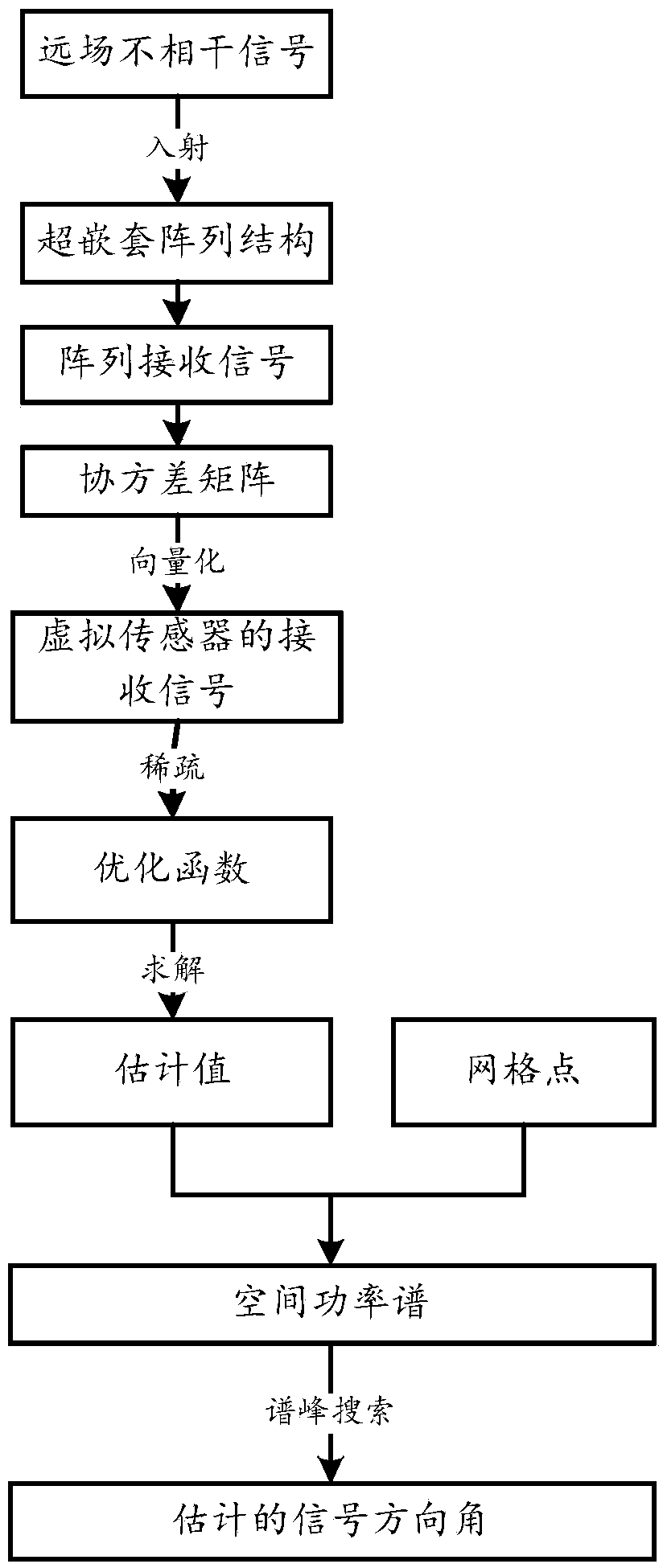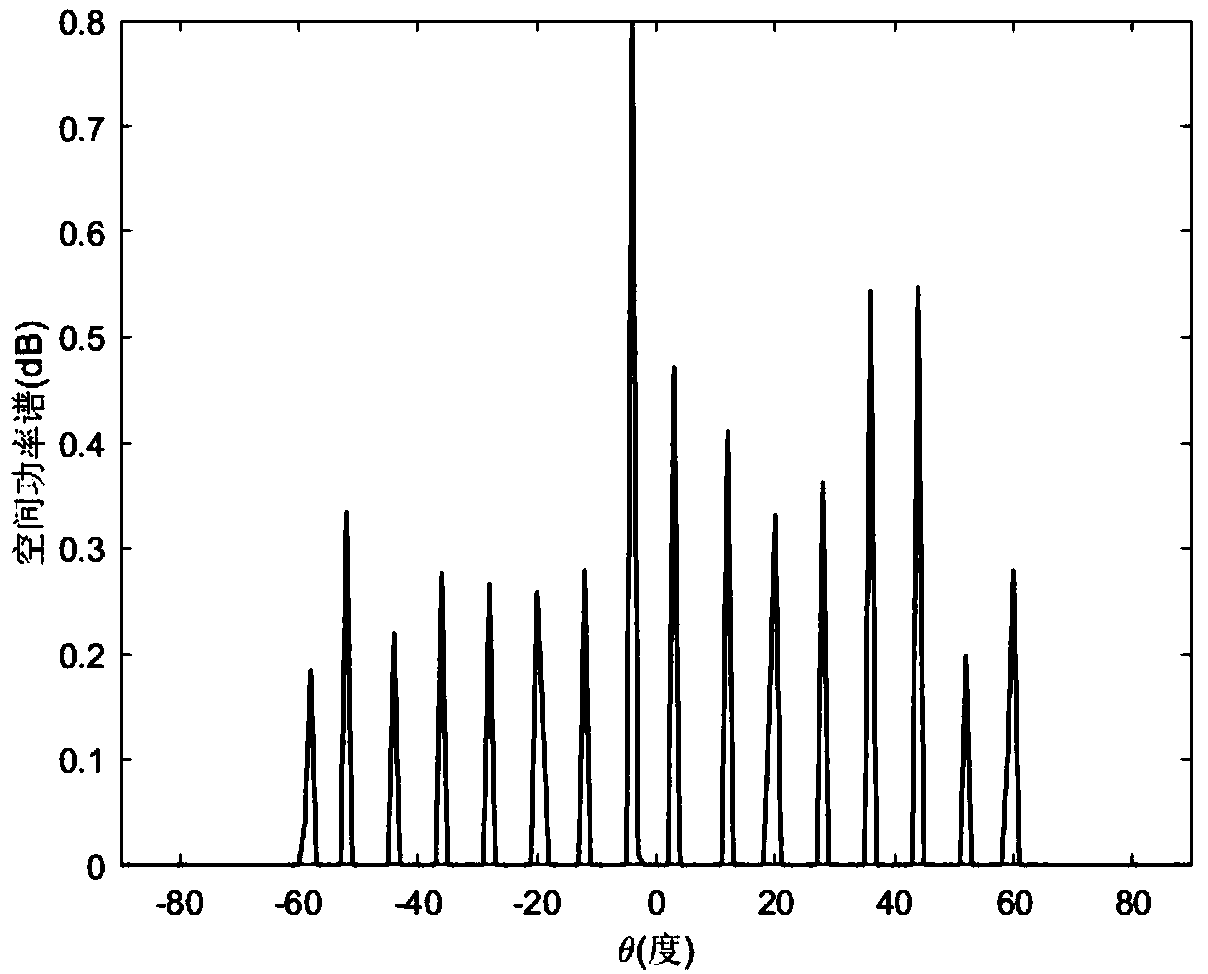Direction-of-arrival estimation method for supernested arrays based on sparse reconstruction
A direction-of-arrival estimation and sparse reconstruction technology, which is applied to radio wave direction/deviation determination systems, direction finders using radio waves, etc., can solve problems such as the reduction of degrees of freedom, reduce estimation errors, and increase estimation information. The effect of increasing the number of sources and improving the estimation accuracy
- Summary
- Abstract
- Description
- Claims
- Application Information
AI Technical Summary
Problems solved by technology
Method used
Image
Examples
Embodiment 1
[0082] Emulation: super-nested array N 1 =5,N 2 =5, its structure is as image 3 As shown, assuming that 16 narrowband signals are incident on the super-nested array (16>10=5+5), the direction of arrival is evenly distributed between -60o and 60o, the signal-to-noise ratio is 0dB, and the number of snapshots K is 300, 16 peaks obtained by spectral peak search, D-sparse vector The estimated value of is a vector, and the values contained in it correspond to the grid points in the angle domain one by one. The abscissa corresponding to each wave peak in the estimation graph is estimated to obtain the estimated value of the corresponding direction angle, such as figure 2 As shown, the error of the obtained direction angle is greatly reduced compared with the existing spatial smoothing algorithm.
PUM
 Login to View More
Login to View More Abstract
Description
Claims
Application Information
 Login to View More
Login to View More - R&D
- Intellectual Property
- Life Sciences
- Materials
- Tech Scout
- Unparalleled Data Quality
- Higher Quality Content
- 60% Fewer Hallucinations
Browse by: Latest US Patents, China's latest patents, Technical Efficacy Thesaurus, Application Domain, Technology Topic, Popular Technical Reports.
© 2025 PatSnap. All rights reserved.Legal|Privacy policy|Modern Slavery Act Transparency Statement|Sitemap|About US| Contact US: help@patsnap.com



